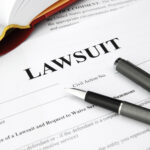In a case involving a class action brought by New Hampshire citizens against a Merrimack plastics plant over its release of toxic chemicals into the air and groundwater, the state’s high court has found that medical monitoring is neither a cause for an action nor a remedy in such a case.
The New Hampshire Supreme Court ruled that the “mere existence of an increased risk of future development of disease is not sufficient under New Hampshire law to constitute a legal injury for purposes of stating a claim for the costs of medical monitoring as a remedy or as a cause of action in the context of plaintiffs who were exposed to a toxic substance but have no present physical injury.”
The state court ruling will have an effect on the certification of the class in an action against the chemical firm, Saint-Gobain Performance Plastics Corp. The U.S. District Court for New Hampshire asked the state’s high court to answer whether New Hampshire recognizes medical monitoring as a remedy or as a cause of action in the context of plaintiffs who were exposed to a toxic substance. That federal court has before it a class action complaint filed in 2016 against Saint-Gobain over its use of chemicals containing polytetrafluorethylane (PTFE) and perfluorooctanoic acid (PFOA) in its manufacturing processes at its Merrimack plant.
U.S. District Justice Joseph N. LaPlante has indicated that while the state’s medical monitoring stance will determine whether a medical monitoring claim or remedy will proceed in the case and, if so, whether a medical monitoring class can potentially be certified, it will not impact the litigation with respect to other issues that were not certified to the New Hampshire Supreme Court.
The state court cited past court rulings and the lack of agreement among state lawmakers on the issue in answering the question in the negative. In 2020, the legislature passed a bill that would have established a statutory cause of action for medical monitoring for toxic substances without proof of present physical injury or symptoms. However, the governor vetoed the bill and the legislature did not override the veto.
According to the plaintiffs, while they have no already-diagnosed physical injury, the increased risk of illness or disease and the inherent latency of visible harm caused by toxins creates the present medical need for medical testing and this constitutes legal detriment and injury. They asserted that because “the foundation of New Hampshire tort law is one’s right to recover for another’s invasion of a legally protected interest,” proof of present physical injury is not required.
Saint-Gobain countered that New Hampshire law requires present physical injury in order to recover under traditional negligence claims. The company noted that the New Hampshire court has never affirmed liability under a negligence claim except upon proof of a physical injury.
The court agreed with Saint-Gobain. According to the ruling, the “present medical necessity” for “diagnostic testing” is based on the plaintiffs’ allegation that they are at an “increased risk” that in the future they might possibly develop an illness or disease caused by exposure to PFOA. However, “an increased risk of harm is not an injury for purposes of a negligence action,” the court concluded.
The plaintiffs brought tort claims under New Hampshire law, including negligence, nuisance, trespass, and negligent failure to warn. They seek damages in the form of the costs of medical monitoring, or in the alternative, injunctive relief to fund a medical monitoring program.
The plaintiffs and other members of the class claim they have suffered annoyance, inconvenience, discomfort and loss of use and enjoyment of the properties which they own and that the releases from chemical plant have caused a diminution in value of their properties and affected the marketability of those properties, which will continue into the future.
In support of their position, the plaintiffs cited decisions from other jurisdictions. However, the court said its own “well- established precedents control” the resolution of this issue. The court further explained, citing from a prior opinion:
If twenty persons were endangered by an act having the possibility of injury, it would be absurd to say that rights of action accrued to all of them at the moment the defendant’s act was completed, such rights of action to evaporate when it turned out that the harm was averted for some reason or other. Only if and when harm came to any one of the twenty, would a right of action accrue . . . . There is an actionable breach of the duty only when the injury happens.
The complaint alleges that Saint-Gobain had knowledge of the emissions of these chemicals at its plants in New York and Vermont and their potential for contamination of water wells and adverse health effects, yet failed to test the wells near the Merrimack plant and to warn the citizens that the wells and groundwater at or near the plant were likely contaminated.
Beginning in April 2016, the New Hampshire Department of Environmental Services recommended that some residents of Litchfield, Manchester and Merrimack use bottled water and advised the residents not to drink or cook with water from the wells. Shortly after this, Saint-Gobain began providing bottled water to citizens.
The case attracted amicus briefs for the plaintiffs from conservation, civil justice and environmental groups including the Conservation Law Foundation, New Hampshire Safe Water Alliance, New Hampshire Science and Public Health and the New Hampshire Association for Justice, as well as briefs in support of Saint-Gobain from lawyers representing pharmaceutical, chemical, tort reform and insurance interests including the New Hampshire Association of Domestic Insurance Companies, American Property Casualty Insurance Association, Washington Legal Foundation, American Chemistry Council, and Pharmaceutical Research and Manufacturers of America.
Topics Lawsuits
Was this article valuable?
Here are more articles you may enjoy.



 Aon Adds to List of Brokers Suing Howden US for Alleged Poaching, Theft
Aon Adds to List of Brokers Suing Howden US for Alleged Poaching, Theft  Three Top P/C Insurers Account for Most of Insurance AI Patents
Three Top P/C Insurers Account for Most of Insurance AI Patents  Court Ruling Could Help Shed Light on Owners of Litigation Funders, Medical Clinics
Court Ruling Could Help Shed Light on Owners of Litigation Funders, Medical Clinics  Former CEO of Nonprofit P/C Statistical Agent Sentenced for Stealing Millions
Former CEO of Nonprofit P/C Statistical Agent Sentenced for Stealing Millions 

